What would happen if the phase shift applied to the reference carrier signal going to the modulator for the Q channel is changed from +90 degrees to -90 degrees?
This is getting a bit into the weeds of digital communication theory, but it's good to know if you want to understand why quadrature modulation and demodulation is done the way it is.
\$sin(n\pi x)\$ and \$cos(n\pi x)\$ form what is known as an orthogonal set of functions. Two functions are orthogonal if their inner product is equal to 0. $$\int^{b}_{a}\phi_i(t)\phi_j(t)dt = 0$$
Furthermore, two functions are orthonormal if they are orthogonal and the inner product of each function with itself is equal to 1 (orthonormal = orthogonal and normalized).
$$\int^{b}_{a}\phi_i(t)\phi_i(t)w(t)dt = 1$$
$$\int^{b}_{a}\phi_j(t)\phi_j(t)w(t)dt = 1$$
$$w(t) = \frac{1}{|b-a|}$$
A function is said to live in the signal space of two orthonormal basis functions when that function can be formed by using a linear combination of the basis functions. $$s(t) = x_i\phi_i(t)+x_j\phi_j(t)$$
I should mention that a signal space can be created with any number of functions, and they don't even need to be orthogonal, but it is much easier to analyze functions in the signal space if the basis functions are orthonormal. You can determine the weight of each basis function for a function in an orthonormal signal space using projection.
$$x_i = \int^{b}_{a}s(t)\phi_i(t)dt$$
$$x_j = \int^{b}_{a}s(t)\phi_j(t)dt$$
So how does this apply to quadrature modulation? As I mentioned earlier, and I won't go into the proof, but \$sin(n\pi x)\$ and \$cos(n\pi x)\$ are orthogonal, and they are orthonormal if they are scaled by \$\sqrt{2}\$. When we multiply these signals with a symbol pulse over a unit interval, the resulting products are also orthonormal as long as the pulse energy is also normalized. This means the receiver can use projection in the form of a matched filter to determine the weight of each basis function.
In quadrature modulation, the weight of the basis functions form the symbol which determines the amplitude of each pulse: \$[x_i,x_j]\$. For QPSK, the possible symbols are \$[-1,-1]\$, \$[-1,1]\$, \$[1,-1]\$, and \$[1,1]\$. If you have an ideal channel, and you sample at the right time, the matched filter will perfectly recover the transmitted symbols.
In summary, sine and cosine are used in quadrature modulation because they can be multiplied by the pulses to make them orthogonal, which makes demodulation simpler. To answer your question, \$sin(n\pi x)\$ and \$-cos(n\pi x)\$ are also orthogonal, so shifting by -90 degrees instead of +90 degrees won't really make a difference.
What would happen if the reference carrier signal is a cosine wave instead of a sine wave?
As stated earlier, as long as the basis functions are orthogonal, it doesn't really matter. By convention, the literature typically mixes the in-phase section with cosine and the quadrature section with sine so the modulation can be represented with a standard complex exponential, but in practice all that matters is that they are 90 degrees out of phase.
